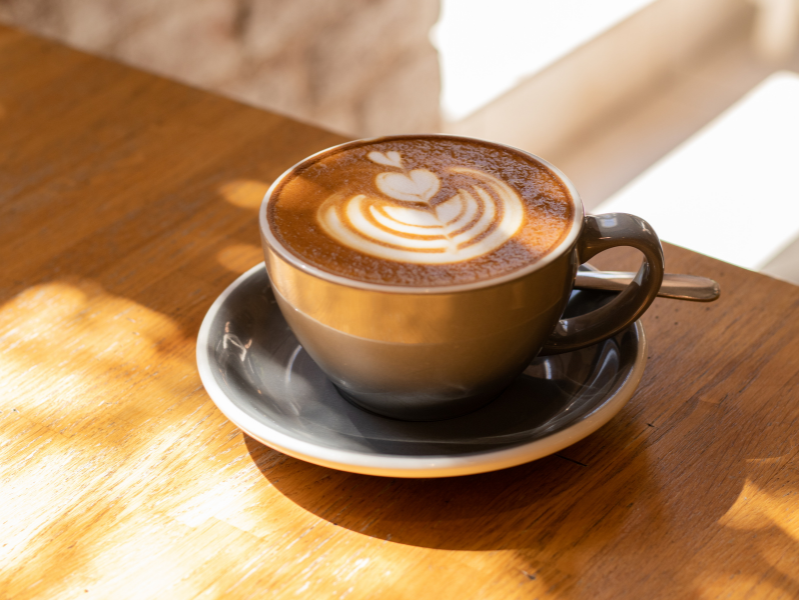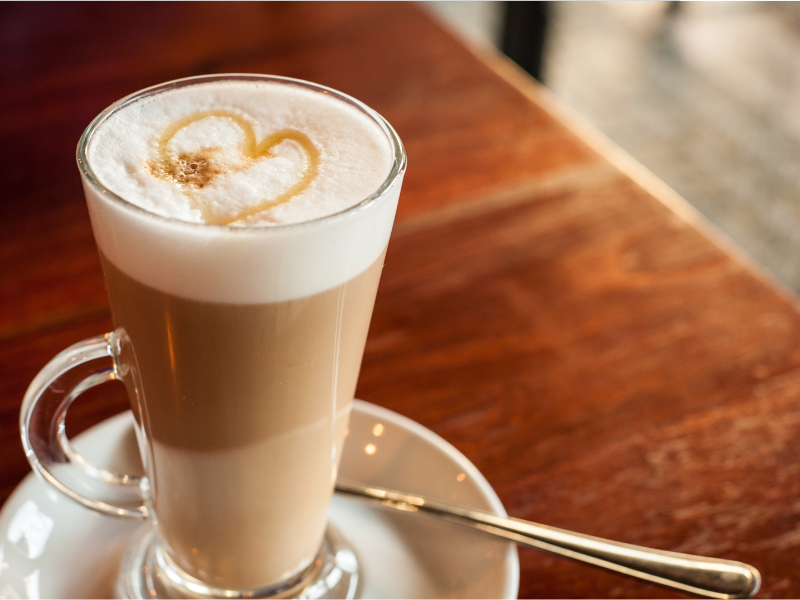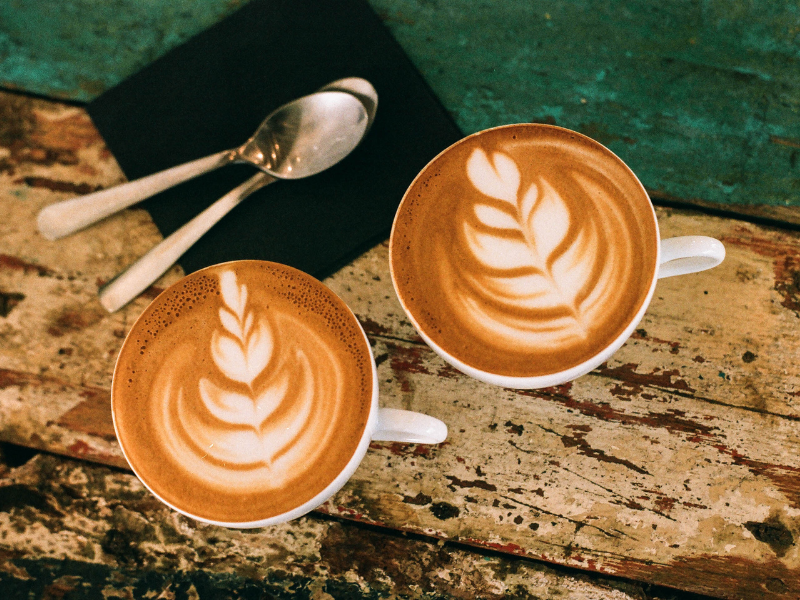Cappuccino vs Latte: What's the Real Difference?
Cappuccino vs Latte, what is the real difference? When stepping into a café, two of the most commonly ordered espresso-based beverages are the cappuccino and the latte. While they may appear similar at a glance—both combining espresso and milk—they have distinct differences in flavor, texture, milk-to-espresso ratio, and even cultural significance. Walking into a coffee shop, two of the most popular ordered espresso drinks are the cappuccino and latte. Although they might seem alike at first glance—both mixing milk and espresso—they have very different differences in taste, texture, ratio of milk to espresso, and even cultural meaning. If you're a coffee lover or just starting to explore the world of espresso-based drinks, you've probably come across the age-old debate: Cappuccino vs Latte. While they might seem similar at a glance—both made with espresso and milk—these two drinks have key differences that set them apart in terms of texture, taste, milk content, and even cultural significance.
In this comprehensive guide, we'll break down what makes each drink unique, how they're made, how they compare to similar drinks like the flat white and americano, and answer some of the most common questions. Let's get brewing!

What Is a Cappuccino vs Latte?
Both cappuccino and latte start with a shot of espresso, but the similarity ends there. Cappuccino and latte are both espresso-based beverages that include milk, but their ratios and textures are quite different.
- The classic Italian coffee drink cappuccino is made with:
o 1/3 espresso
o 1/3 steamed milk
o 1/3 milk foam
This produces a light, airy surface with a strong coffee flavor that's not overcome by the milk.
- Latte, short for caffè latte, is literally "milk coffee" in Italian. It comprises:
o 1/3 espresso
o 2/3 steamed milk
o On top, a thin coating of milk froth
Compared to cappuccinos, lattes are more subtle, creamier, and milky.
Key Difference: Cappuccino highlights texture and foam, whereas latte emphasizes milk quantity and creaminess.

How to Make a Latte vs Cappuccino
Both drinks begin with the same brewing method but branch off in preparing and pouring milk.
How to Make a Cappuccino:
- Pull an espresso shot (approximately 1 oz).
- To make dense microfoam, steam your milk at a temperature of 150°F/65°C.
- Pour equal amounts: Begin with the espresso, follow by steamed milk, then finish with thick foam.
- Optional: Sprinkle with cocoa or cinnamon powder.
How to Make a Latte:
- Draw an espresso shot (1 oz).
- Steam additional milk to a velvety microfoam but thinner than cappuccino foam.
- Pour steamed milk gradually over espresso, reserving most of the foam.
- For presentation, sprinkle a little foam over top.
Lattes tend to be served in larger cups (8–12 oz), whereas cappuccinos are typically 6 oz or less.
Cappuccino vs Latte vs Flat White
The flat white is the dark horse of the group but is worthy of inclusion in the comparison.
|
Drink |
Espresso |
Steamed Milk |
Foam |
Texture |
|
Cappuccino |
1/3 |
1/3 |
1/3 |
Frothy and airy |
|
Latte |
1/3 |
2/3 |
Light |
Creamy and smooth |
|
Flat White |
Double |
2/3 |
Thin |
Silky and dense |
Flat whites are usually served with a double shot of espresso and a more delicate layer of milk froth, in contrast to cappuccino. They originated in Australia and New Zealand. It is midway between a latte and cappuccino in milk-to-coffee ratio but is closer to a strong, espresso-driven drink.

How Much Milk in a Latte vs Cappuccino
The big differentiator in the two is milk.
- Compared to a cappuccino, a latte has more milk—usually 6–8 ounces for every espresso shot.
- Cappuccino: Has only 2–4 oz of milk, including the foam. As a result, the drink is lighter and has a deeper flavour.
If you're monitoring your dairy consumption or want a bolder presence of espresso, a cappuccino will be the preferred choice. If you enjoy a creamier, smoother experience, the latte is where it's at.
Cappuccino vs Latte: Which Is Sweeter?
The inherent sweetness of a coffee beverage is mostly derived from the milk content. When milk is frothed, its lactose (sugar of milk) is broken down and becomes sweeter.
- Latte: Because there is more milk in it, it tastes naturally sweeter.
- Cappuccino: Less milk, thus a bolder espresso flavor and less sweetness.
Neither beverage has added sugar by nature. Most coffee shops provide flavored syrups (vanilla, caramel, hazelnut) for a customized level of sweetness—particularly with lattes.
What Is a Cappuccino vs Latte vs Americano?
Let's add another competitor: the Americano.
- An Americano is a drink made with espresso and hot water, usually in a 1:2 or 1:3 ratio.. No milk is added unless you ask for it.
|
Drink |
Base |
Milk Content |
Flavor Profile |
|
Cappuccino |
Espresso |
High |
Medium, airy, balanced |
|
Latte |
Espresso |
High |
Smooth, sweet, mild |
|
Americano |
Espresso + Water |
None (unless added) |
Strong, slightly diluted |
Bottom line: For espresso flavor and no milk, an Americano is best.The best option for espresso with milk is a cappuccino. For a smooth, milk-dominated experience, a latte is perfect.
Conclusion: Which One Should You Pick?
When considering the cappuccino versus latte, it's really about your personal taste:
- Opt for a cappuccino if:
o You prefer strong, intense espresso taste.
o You like a foamy, textured topping.
o You want a smaller, more concentrated beverage.
- Opt for a latte if:
o You prefer a creamier, less intense coffee.
o You want a large cup to sip.
o You enjoy playing with flavored syrups or latte art.
And if you're someone who likes strong coffee but wants to avoid dairy altogether, an americano or even a flat white with plant milk might be your best bet.

FAQs About Cappuccino vs Latte
Q1: Which has more caffeine, cappuccino or latte?
➡️ They contain the same amount of caffeine technically if both order a single shot of espresso. Lattes, however, may be ordered in larger sizes with double shots, leading to more caffeine.
Q2: Is it possible to prepare a cappuccino or latte without an espresso machine?
➡️ Yes! You can substitute with strong brewed coffee or a moka pot. For milk foam, you can use a milk frother, French press, or shake warm milk in a jar.
Q3: Is a cappuccino more healthy than a latte?
➡️ Cappuccinos tend to have fewer calories because of less milk. Both can be included as part of a healthy diet—particularly when using skim, almond, or oat milk.
Q4: Which beverage is latte art more suitable for?
➡️ Lattes are best for latte art due to their higher level of steamed milk and smoother texture. The thick foam of cappuccinos makes it more challenging to create art.
Q5: What should a newcomer to coffee order?
➡️ A latte is usually the most beginner-friendly. Its mellow, smooth taste keeps the espresso from being overwhelming for newbies to drink.
Whether you're after strength, creaminess, or something in between, knowing the difference between cappuccino and latte gives you the power to order (or make) the perfect cup. Whether you're a social sipper or an espresso aficionado, knowing the difference between a latte and a cappuccino assists you in making a better (and tastier) decision. So the next time you're at a coffee shop, you'll know precisely what to order—and why.
☕ Sip and savor!





